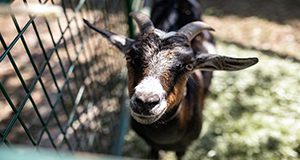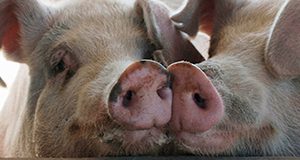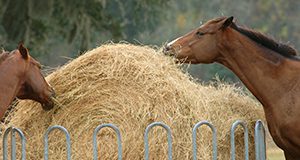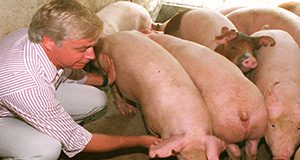This 7-page document provides a list of common hazards to consider in the manufacturing of feed for small ruminants. Written by Chalise Brown, Diwakar Vyas, and Jason M. Scheffler, and published by the UF/IFAS Department of Animal Sciences, November 2020.
https://edis.ifas.ufl.edu/an363
Tag: Jason M. Scheffler
Common Hazards to Consider during Manufacturing of Feeds for Swine
This 8-page document discusses common biological, chemical, and physical hazards that may need preventive measures during the manufacture of swine feeds. Written by Taylor Langford, Morgan McKinney, Chad Carr, and Jason M. Scheffler, and published by the UF/IFAS Department of Animal Sciences, September 2019.
http://edis.ifas.ufl.edu/an357
Riesgos Comunes a Considerar Durante la Manufactura de Alimentos para Caballos
El decreto de Modernización de la Seguridad Alimentaria (FSMA por sus siglas en inglés) fue firmado en Enero del 2011. Dicho documento intenta cambiar el enfoque de la seguridad alimentaria hacia prevención en lugar de reacción ante eventos relacionados con alimentos. Determinar si un peligro requiere un control preventivo depende de la frecuencia y la gravedad del peligro, el cual varía de acuerdo a la instalación y la especie alimentada. This 5-page fact sheet is the Spanish version of EDIS document AN344, Common Hazards to Consider During Manufacturing of Feeds for Horses. Written by Ana Margarita Arias, Taylor N. Langford, Carissa Wickens, Lori Warren, and Jason M. Scheffler, and published by the UF/IFAS Department of Animal Sciences, July 2018.
http://edis.ifas.ufl.edu/an345
Common Hazards to Consider During Manufacturing of Feeds for Horses
Horses are uniquely sensitive to fumonisin and ionophores compared to other livestock species. Facilities, particularly mixed-species feed facilities, need to ensure CGMPs, SOPs, and possibly preventive controls are implemented to address those concerns in addition to more general hazards. This 5-page fact sheet discusses common biological, chemical, and physical hazards in horse feeds as well as methods of prevention. Written by Jason M. Scheffler, Taylor N. Langford, Carissa Wickens, and Lori Warren, and published by the UF/IFAS Department of Animal Sciences, June 2018.
http://edis.ifas.ufl.edu/an344
The Food Safety Modernization Act (FSMA) Preventive Controls for Animal Food
The Food Safety Modernization Act (FSMA) was signed into law in January of 2011 and is considered the most sweeping reform of food safety regulations in 70 years. The human food regulations were composed first and, with significant input from industry, academia, and consumer groups as well as other agencies, were then modified to better suit animal food production. In Florida, these new regulations apply to facilities that manufacture, process, pack, or hold food or food ingredients for animals. These facilities may include pet food manufacturers, renderers, ethanol distillers, feed mills, distributors, and others. The primary goal of these regulations is to ensure safe food for the animals, people who handle the feed, and people who consume the final animal products. This 3-page fact sheet discusses requirements, facilities that will most likely be expected to be in compliance, deadlines, development of a food safety plan, and preventive controls qualified individuals. Written by Jason M. Scheffler and Chad Carr, and published by the UF Department of Animal Sciences, December 2016.
http://edis.ifas.ufl.edu/an330




